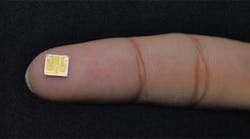By offering reduced size and power consumption, the Nitero chipset can be used to send and receive large amounts of data in a variety of applications (see figure). For example, it is intended for use in a wide range of devices including personal computers, tablets, and smartphones. The technology's fast data-synchronization rates enable the rapid transfer of video, bringing the "wireless office" closer to reality.
The grant comes from Commercialisation Australia, a government initiative to accelerate the business building process for Australian companies, entrepreneurs, researchers, and inventors. In its announcement of more than AU $13 million, which included the Nitero investment, Commercialisation Australia also provided funding for an influenza test kit for pandemics, a bioherbicide to counter invasive weeds, and a livestock pest-control system. In total, Commercialisation Australia has invested AU $45 million in 115 projects.

